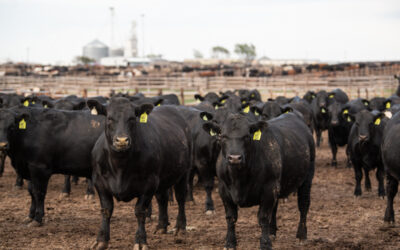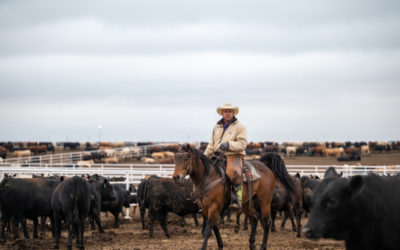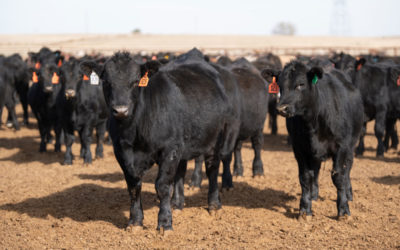
Beef must differentiate
Keeping up with the times includes marketing
by Miranda Reiman
A lot can change in half a century. A lot can stay the same.
U.S. feeder cattle illustrate that well, said Mark McCully, vice president of supply for the Certified Angus Beef ® (CAB®) brand, at the Indiana Beef Cattlemen’s Association annual meeting last month.
“Think of how we are selecting genetics today—the tools and amount of information we have available—versus 50 years ago,” he said. “In many cases, herd bulls are selected with far more precision, and yet we still tend to lump their offspring together with others. We use ‘the eyeball test’ and sell them as a commodity.”
Programs that detail health history have been around for a while, but those are just part of what’s possible in classifying differences, McCully said. One relatively new opportunity is genetic documentation.
“We’ve probably suppressed some value discovery in the feeder calf market over the last few years just because the cow-calf producer has had the leverage,” he said, “but now that’s changing.”
The comments were part of a talk on “value-added cattle,” which McCully noted everyone in the beef chain defines differently. To some, it means trying to “upgrade” inferior cattle. Others might interpret it as a special feeder-calf program or coordinating genetics and management to aim for a premium target. Consumers tend to rely on brands, he said.
Using a live, text-to-respond tool, he asked the audience, “What’s the most important trait for a value-added feeder calf?”
Nearly half, 47%, said “source verification,” while another 37% said “health documentation, and the remaining 16% selected “genetic verification.” No one chose “humane care” or “age verification.”

As fed cattle are marketed, however, the real value drivers are in performance and carcass merit, McCully said. Marketing has shifted from a 50-50 split on formula versus cash in 2005, to nearly four out of five fed cattle sold on grid or formula pricing today.
During that same time, the number of USDA-certified branded programs grew from 53 to 197.
“The mix has really changed over the last 10 years,” he said.
Reviewing the USDA-reported average load counts by grade, the number of branded boxes versus Select boxes flip-flopped.
“This was the first time the beef industry sold, on average every week, more boxes of branded beef than Select—almost three times more than Select,” McCully said, noting that in 2005 that ratio was 3:1 Select to branded.
That indicates the market signals are working, he said.
February wholesale cutout prices for a 900-pound (lb.) carcass showed nearly $200 difference between a Select carcass and one that had qualified for CAB, for example.
McCully asked, “What is the No. 1 reason consumers purchase beef?”
Almost three-quarters of the respondents replied, “unique and desirable flavor.” Their answer lined up with decades of end-user studies, many of which show that eating experience improves linearly with quality grade.
The group collectively looked into the future to predict which trait would increase the most in value.
Marbling/quality-grade premiums came in first at 40%, followed by naturally-raised/organic (23%), genetic documentation (20%) and humane handling documentation at 17%.
“There is no ‘right’ answer,” McCully said, but the informal poll should make producers think about what creates value now, and what will in the feature.
A lot can change. A lot can stay the same.
You may also like
Missing the Mark Leaves Money on the Table
Certified Angus Beef regularly collects data on millions of fed cattle to discover how cattlemen can capture more value for high-quality carcasses beginning on the ranch. When black-hided cattle don’t earn the CAB stamp, it’s most often for missing the mark in marbling, HCW, REA and backfat.
How to pick a feedyard
Not every ranch, pen or feedlot is alike or ideally suited to handle the same class of cattle. Here is a 12-point checklist of ways cattlemen can help themselves when selecting a feedyard.
Backgrounding can add value, flexibility
Backgrounding calves can open gates to new revenue paths, though not without risk. When more cattle are sent to the grazing fields or grow yards, there’s a shift in the seasonal pattern of the market and more opportunity to take advantage of better prices.



